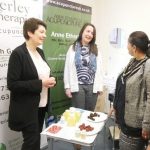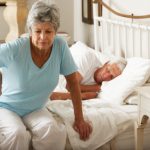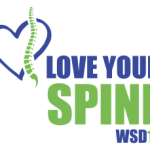As Chiropractor’s we mainly see patients presenting with back and neck pain. Over the years and thousands of appointments there are most certainly some common themes that have repeated themselves – either in terms of the process that results in an injury, or what advice we give out to help prevent it from happening again. Here is our tried and tested two-step process that is a great foundation for minimising spinal injuries and the impact they can have on your life:
1. Understanding how injuries to the spine happen: In clinic the level of pain that patients sometimes present with can be quite high! And you would expect the level of force that caused the injury to mirror that. However only 5% of the problems we see in clinic are due to a substantial amount of sudden force. 95% of the problems arise from milder, but accumulative strains over time. These smaller strains often go un-noticed, until they build up and the ‘my back just went’ story starts. This is where the threshold for injury has been reached, and most often results in the call to the Doctor or Chiropractor. If you listen to your body whisper and you won’t have to hear it shout. In reality sometimes it is too late and it is definitely shouting (in the form of pain and damage). Once you have had treatment or have recovered you can learn to pick up on the whispers (niggles and tension) and aim to prevent problems from occurring.
2. Planning for injury prevention: Everyone knows prevention is easier than cure, and now we know how most spine injuries happen we need some prevention tactics. ‘Micro-breaks’ are a key addition to your spinal health and minimise the accumulative strain process. For example if you are at your desk all morning, every 20 minutes you can roll your shoulders backwards 10-15 times, give the back a good stretch up with a deep breath in, or just volunteer to make someone (and that can include oneself!) a cuppa. In the garden you can of course use the same micro-break process, but can also take advantage of ‘active breaks’ to share the load to different areas of your spine, without losing valuable working time. In this scenario if you are working for 4 hours in the garden, and spend 2 hours on your knees working low down, and then 2 hours digging, those accumulative strains have time to build up and possibly take you closer to that injury threshold. If you switched tasks every half an hour or so, this varies the load and allows the area of your body to recover whilst doing a different task. Dealing with back and neck pain is obviously more complicated than just using these two steps (otherwise that was a long seven years of studying for that concept!), however with our approach these two steps are always integrated in successfully treating and preventing so many types of spinal problems. Try to listen when your body whispers and use these tips for a healthier spine.
More
We would like the thank the 242 patients who completed the questionnaire in August for their support – the results are great as you can see – thank you. It was amazing that 100% of you felt that you would recommend your friends and family to us and this is the best way to share the benefits of chiropractic – by sharing your experience.
We were sad to learn that many of you are unaware of the information available to you on our website – so try and have a little browse around there when you have time – if you are on Facebook – don’t forget to like us t hen you will get up to date tips and information as soon as we get them.
hen you will get up to date tips and information as soon as we get them.
Look out for this months challenge where Andrew is asking you to give us a review on Google please.
The Clinic:
- Do you find the clinic’s opening hours meet your requirements for calling to make appointments and for your treatment sessions? 100% Yes
- When you call the clinic to make appointments do you find your call is answered promptly?
Always 92% Sometimes 5% Not often 1 % Never 0%
- Do you find the receptionists to be helpful and pleasant in offering you the appointment you require?
Always 96% Sometimes 3% Not often 0% Never 1%
- If you are unable to gain an appointment, are you offered a place on the waiting list?
Always 47% Sometimes 7% Not often 1% Never 0% NA 45%
- How do you travel to the clinic? Please circle all that apply
Car 93% Taxi 4% Bus 2% Tram 4% Bike 5% Walk 13% Other 8%
- If you travel by car do you manage to obtain a parking space?
Always 82% Sometimes 8% Not often 0% Never 1% N/A 9
- When you arrive at the clinic are you always welcomed by the receptionists?
Always 99% Sometimes 1% Not often 0% Never 0%
- Do you find the facilities the reception area offers meet your needs?
Fully 92% Mostly 8% Not Really 0% Not at all 0%
Your treatment experience:
- Are you seen on time for your appointment?
Always 52% Sometimes 45% Not often 3% Never 0%
- Do you feel that your chiropractor listens to you?
Always 98% Sometimes 2% Not often 0% Never 0%
- Do you find that your chiropractor understands your condition and helps you understand what your problem is?
Always 98% Sometimes 2% Not often 0% Never 0%
- Does your chiropractor explain what your treatment procedure involves and what it is trying to achieve?
Always 90% Sometimes 10% Not often 0% Never 0%
- Does your chiropractor share addition advice and information with you? Yes 100%
If yes please circle all that apply:
Exercise and fitness 79%, postural advice 58% diet advice 15%
Healthy living and lifestyle 21% other 8%
Communication:
- Do you find the text reminder service helpful? Yes 95% / No 1% / NA 4%
- Did you know there is an out of hours help line? Yes 53%/ No 47%
- Do you find the clinic newsletters informative? Yes 62% / No 13%/ NA 25%
- Do you use the clinic website? Yes 19% / No 72% / N/A 9%
- What do you use it for? Circle all that apply:
contact details 4% opening times 5% price guide 2% information 7%
blogs 3% podcasts 8% newsletters 7% exercise videos 41% other 8%
- Are you on Facebook? Yes 55% / No 42% / N/A 3%
- Did you know that the clinic shares topical information on Facebook on a regular basis?
Yes 19% / No 70% / N/A 11%
- Would you recommend your friends and family to the clinic? Yes 100% /No
- How would you rate your overall experience of the clinic on a scale of 1-10?
(10 being excellent and 1 being poor) 66% 10/10, 27% 9/10, 6% 8/10. <1% 7/10
More
At the time of writing this there were 54 sleeps till Christmas! I know, where has the year gone?  Which caused you most dread? Sleep? Or Christmas? The thought of going to bed is not something you look forward to if you can’t sleep. The inability to sleep can come from a variety of causes; pain, feeling hot, over thinking, anxiety, having to go to the loo multiple times. What have you tried to fix it? Milky drinks, chamomile tea, alcohol, reading, no screen time before bed? Perhaps lack of sleep isn’t the problem, maybe you struggle to get through the day without a nap and long to return to bed.
Which caused you most dread? Sleep? Or Christmas? The thought of going to bed is not something you look forward to if you can’t sleep. The inability to sleep can come from a variety of causes; pain, feeling hot, over thinking, anxiety, having to go to the loo multiple times. What have you tried to fix it? Milky drinks, chamomile tea, alcohol, reading, no screen time before bed? Perhaps lack of sleep isn’t the problem, maybe you struggle to get through the day without a nap and long to return to bed.
Have you tried acupuncture or Chinese herbal medicine? Both have been used for thousands of years to bring the body back in to balance. It is used by many to aid a good night’s sleep and stress relief. Practitioners look for and treat the root of the problem and not just treat the symptoms.
Acupuncture can be a very relaxing treatment and some people even manage 40 winks whilst they have their needles in. So, if the thought of the festive period is causing you sleepless nights, or life at the moment is making you feel shattered. Chinese medicine can get you through this, with an enhanced feeling of well-being and calm.
Did you think acupuncture was just for pain? Anne and Sarah welcome any questions you have about acupuncture or herbal medicine and how they might help your individual concerns. They are in clinic on a Wednesday and Thursday afternoon, but you can reach them through.
www.brierleytherapies.co.uk www.acupunctureuk.co.uk
More
In the UK, back pain is one of the most common reasons people miss work, and is the leading cause of disability worldwide. With something so common, it has easy for people to get confused about back pain and misconceptions to arise!
We know that the easiest way to tackle back pain is to keep moving, but sometimes these myths and misconceptions can stop people from doing exercise or seeking proper treatment.
One of the most common myths about back pain is that people think it’s not going to happen to them. In fact 4 out of 5 of us will be affected by back pain at some point in our lives!
Here are the top myths about back pain debunked:
- MYTH: Exercise will cause or worsen back pain
- Staying bed bound with back pain can be one of the worst things you can do! Without exercise muscles become weakened, deconditioned and stiff. To reduce back pain you should rest, calm the pain, followed by gentle exercise.
- MYTH: If you see a spine specialist you will end up getting surgery
- Spinal surgery is only recommended in about 1% of cases. In most cases the treatments recommended will be non-surgical, such as exercise, physical therapy and anti-inflammatory medication.
- MYTH: Back pain is a normal part of aging
- Some people believe that back pain is a typical part of getting older but it shouldn’t be a normal part of your day. We all get aches and pains as we age, however with all the options to ease back pain available today you shouldn’t suffer in silence.

More
When you are suffering with back pain, whether it is in the neck, between the shoulder blades or in the lower back, it can sometimes be difficult to know what to do. Do you sit, rest, keep active, use heat or cold?
The most common cause of back pain is when the joints of the back become restricted due to abnormal stress such as, incorrect posture, degeneration and emotional stress. This causes tightening and inflammation around the joints resulting in muscles tightening in order to protect that area of the spine from further trauma. Muscle tightness causes the joint to be even more restricted in movement and therefore causes more joint inflammation and the cycle continues. People suffer from different types of back pain, some with tightening but others without, and therefore they will require a different treatment plan.
Chiropractors have the skill of removing joint restriction by using spinal adjusting to address the underlying problems of back pain.However, secondary problems of muscle tightness and joint inflammation require ongoing treatment so there are certain things a patient can do to relieve the pain.
Cold Treatment
- The recommended treatment for back pain without muscle tightness is a cold treatment. This is simply a cold pack applied to the injury, which acts like a painkiller reducing the inflammation.
- A Cold treatment can be used in any area of inflammation. i.e. spine or joint inflammation and restriction, knee swelling, sprained ankle etc.
Hot Treatment
For back pain with muscle tightness a hot pack is more suitable. Tight muscles are usually tender to touch, you can sometimes feel pea-sized knots and crystals in the muscle, heat relaxes the muscle and improves flexibility. Hot treatment can be used alone over tight muscles when they have contracted due to overuse, or ache following being used in a different way.
Hot & Cold Treatment
Leaving a hot pack on the spine for a long time can increase the inflammation and cause the pain to increase. In this case once relaxation has occurred a cold pack is placed over the area to help decrease the joint inflammation.
It is always best to consult a Chiropractor first but the advice is not to rest, but to try and keep active, manoeuvring the joint at least every 20 – 30 minutes. Combine this with the hot or cold method of treatment and you will help relieve the pain resulting in a quicker recovery.
More
Coming up this month is the awareness week for the charity ‘BackCare’.
Back pain is one of the major disabling health conditions among older adults aged 60 years and older. Many causes of lower back pain are age-related with physical and psychosocial changes. There is a distinct lack of awareness, especially in older adults to the causes and effects of back pain and pain management.
Existing evidence suggests that prevalence rates of severe and chronic low back pain increase with older age. As compared to working-age adults, older adults are more likely to develop lower back pain like osteoporotic vertebral fractures, tumors, spinal infection, and lumbar spinal stenosis
– NCBI (www.ncbi.nlm.nih.gov)
In the clinic your chiropractors are constantly aware of the risks our older patients are prone to and are keen to encourage exercise and advice to support as best they can -why not ask for some tips when you see your chiropractor next.

More
 Also in October (Taking place on October 16 each year), is World Spine Day.
Also in October (Taking place on October 16 each year), is World Spine Day.
It has become a focus in raising awareness of back pain and other spinal issues. With health professionals, exercise and rehabilitation experts, public health advocates, school children and patients all taking part, #LoveYourSpine will be celebrated on every continent.
Look out for the hashtag: #LoveYourSpine it will be used to highlight the importance of spinal health and wellbeing. Promotion of physical activity, good posture, responsible lifting and healthy working conditions will all feature as people are encouraged to look after their spines and stay active.
With an estimated one billion people worldwide suffering from back pain, it affects all age groups, from children to the elderly. It is the biggest single cause of disability on the planet, with one in four adults estimated to suffer from back pain during their lives. Prevention is therefore key and this year’s World Spine Day will be encouraging people to take steps to be kind to their spines.
Populations in under-serviced parts of the world often have no access to conventional healthcare resources to care for spinal pain and disability. Often relying on traditional healers, even those who are seen in hospital are often only given anti-inflammatory medication. Dedicated spinal health professionals do not exist in many parts of the world, so education and self-help is key. Even in high-income countries, back pain affects many millions of people, resulting in an enormous impact on industry and the economy.
Organized by the World Federation of Chiropractic on behalf of the Global Alliance for Musculoskeletal Health, World Spine Day has over 500 official organizational supporters worldwide. More information is available at www.worldspineday.org
More
With long distance running marathons and triathlons becoming increasingly popular as well as a increasing array of high intensity exercise classes like Zumba, Barry’s Bootcamp, HulaFIt, calf muscle injures are seen more commonly.
How does it happen?
Calf strain occurs when the muscle at the back of the lower leg becomes damaged or inflamed due to excessive strain or force being placed on the calf muscle. These injuries often arise from sports that involve repeated jumping or change of direction as well as explosive sprinting or long distance running.
Calf muscle tears get more common as we get older due to the loss of elasticity in our muscles and tendons. Soft tissue injuries get more common if you over train a certain structure and eventually it breaks. Often injuries can start with micro-tears in the calf muscle and achilles tendon and this in turn can result in a to a complete tear.
What are the symptoms?
Patients are likely to feel aching and stiffness which becomes more apparent first thing in the morning and often the calf will feel weak, making the patient unable to resume activity and sometimes bear weight resulting in a limp.
How can I prevent it?
If you’ve been inactive for an extended period of time, to prevent injuries you need to start off very slowly and gently. Start with non-ballistic exercises such as calf raises and progress the program to eventually include ballistic exercises, maybe 3 months later.
Top Tip
Warming up and stretching after exercise is always recommended but be careful not to overstretch or put excess force on calf muscles. Stretch until there’s light tension in the muscles, taking a deep breath and slowly exhaling. Hold that position for 15-to-30 seconds, relax and repeat up to four times. Stay still and don’t bounce during stretching. Don’t push yourself to the point of pain; ease the stretch until it is comfortable.
More
Researchers reveal that sudden, acute episodes of low back pain are not linked to weather conditions such as temperature, humidity, air pressure, wind direction and precipitation.
Findings published in Arthritis Care & Research indicate that the risk of low back pain slightly increases with higher wind speed or wind gusts, but was not clinically significant.
According to the World Health Organization (WHO) nearly everyone experiences low back pain at some point in their life, making it the most prevalent musculoskeletal condition; affecting up to 33% of the world population at any given time.
“Many patients believe that weather impacts their pain symptoms,” explains Dr. Daniel Steffens with the George Institute for Global Health at the University of Sydney, Australia. “However, there are few robust studies investigating weather and pain, specifically research that does not rely on patient recall of the weather.”
For the present case-crossover study 993 patients seen at primary care clinics in Sydney were recruited between October 2011 and November 2012. Weather data from the Australian Bureau of Meteorology were sourced for the duration of the study period. Researchers compared the weather at the time patients first noticed back pain with weather conditions one week and one month before the onset of pain.
Results showed no association between back pain and temperature, humidity, air pressure, wind direction or precipitation. However, higher wind speed and wind gusts did slightly increase the chances of lower back pain, but the amount of increase was not clinically important.
More
One of the most common side effects of pregnancy for women across the country is back pain, especially lower back pain.
Your body goes through lots of changes when you’re pregnant, including gaining extra weight, your centre of gravity becoming lower and the ligaments around your pelvis are relaxing to prepare you for labour.
Did you know.. Although exercise may not seem appealing, it can be very effective at helping to ease the pain.
Gentle exercise that helps strengthen the core abdominal muscles can help to spread the weight around your body and prevent localised pain in your lower back.
Keeping your muscles active can help prevent them becoming stiff and painful as your pregnancy develops.
Remember.. Posture is also key to relieving back pain during pregnancy.
Always remember these principles of good posture to help relieve any stress on your spine:
- Stand up straight rather than slouching
- Hold your chest high
- Keep your shoulders and back relaxed
- Stand with your feet hip width apart to keep your upper body fully supported
It is also good to support yourself, whether you’re exercising or simply lying down, to help your body cope with the extra weight it is carrying.
Did you know… Water based exercises, such as aqua natal classes, are a particularly effective way to exercise the muscles during pregnancy without over exerting yourself as the buoyancy of the water can also act as an extra support for your body.
Gentle yoga or going for a walk are other good ways to keep the muscles active and help ease the symptoms of backache during pregnancy.
More

 hen you will get up to date tips and information as soon as we get them.
hen you will get up to date tips and information as soon as we get them. Which caused you most dread? Sleep? Or Christmas? The thought of going to bed is not something you look forward to if you can’t sleep. The inability to sleep can come from a variety of causes; pain, feeling hot, over thinking, anxiety, having to go to the loo multiple times. What have you tried to fix it? Milky drinks, chamomile tea, alcohol, reading, no screen time before bed? Perhaps lack of sleep isn’t the problem, maybe you struggle to get through the day without a nap and long to return to bed.
Which caused you most dread? Sleep? Or Christmas? The thought of going to bed is not something you look forward to if you can’t sleep. The inability to sleep can come from a variety of causes; pain, feeling hot, over thinking, anxiety, having to go to the loo multiple times. What have you tried to fix it? Milky drinks, chamomile tea, alcohol, reading, no screen time before bed? Perhaps lack of sleep isn’t the problem, maybe you struggle to get through the day without a nap and long to return to bed.

 Also in October (Taking place on October 16 each year), is World Spine Day.
Also in October (Taking place on October 16 each year), is World Spine Day.